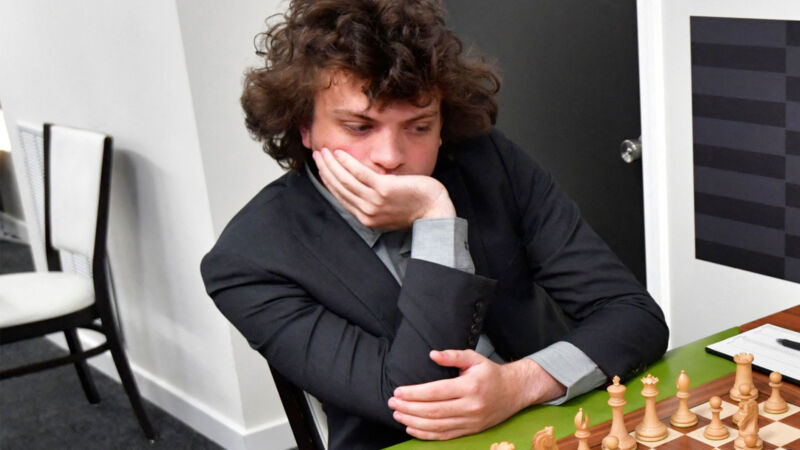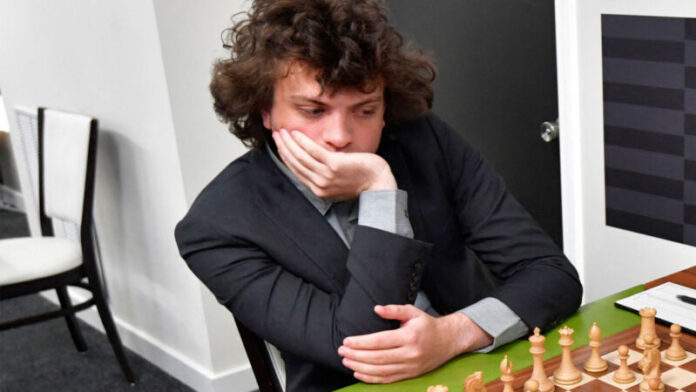
Enlarge / US international grandmaster Hans Niemann at the second day of the Saint Louis Chess Club Fall Chess Classic in St. Louis, Missouri, on October 6, 2022. (credit: Tim Vizer / AFP)
Last September, the Internet was abuzz for weeks about a chess cheating controversy that erupted during the third round of the Sinquefield Cup. The reigning chess world champion, Magnus Carlsen, lost to a 19-year-old upstart named Hans Niemann in what was widely considered a shocking upset. Carlsen withdrew from the tournament the next day—an incident considered "virtually unprecedented' at such a high level of chess—and his cryptic comments on Twitter fueled rampant speculation that Niemann had cheated.
Things snowballed from there, with a full investigation and a $100 million lawsuit filed by Niemann in October. A judge dismissed the lawsuit in June. Now, Niemann and Chess.com have finally "resolved their differences" and settled the matter. Niemann can now return to Chess.com and is eligible to play in any event. All the parties involved are free to voice their opinions about the controversy.
The Carlsen/Niemann dustup is considered the most serious chess cheating scandal since the 2006 World Chess Championship, dubbed "Toiletgate" because Veselin Topalov accused his opponent, Vladimir Kramnik, of going to the bathroom too often. (Topalov thought Kramnik was getting computer assistance during the match via these bathroom breaks, later insisting that network cables had been found in the bathroom ceiling.) Anti-cheating measures have since been upgraded for future chess events in response. Those measures include nonlinear junction detectors to detect electronics, an RF machine to detect infrared signals, confiscating electronics from spectators, a 30-minute broadcast delay for US chess championships, and even retaining a medical doctor to inspect players' ears for hidden transmitters.
Read 9 remaining paragraphs | Comments
Ars Technica - All contentContinue reading/original-link]




